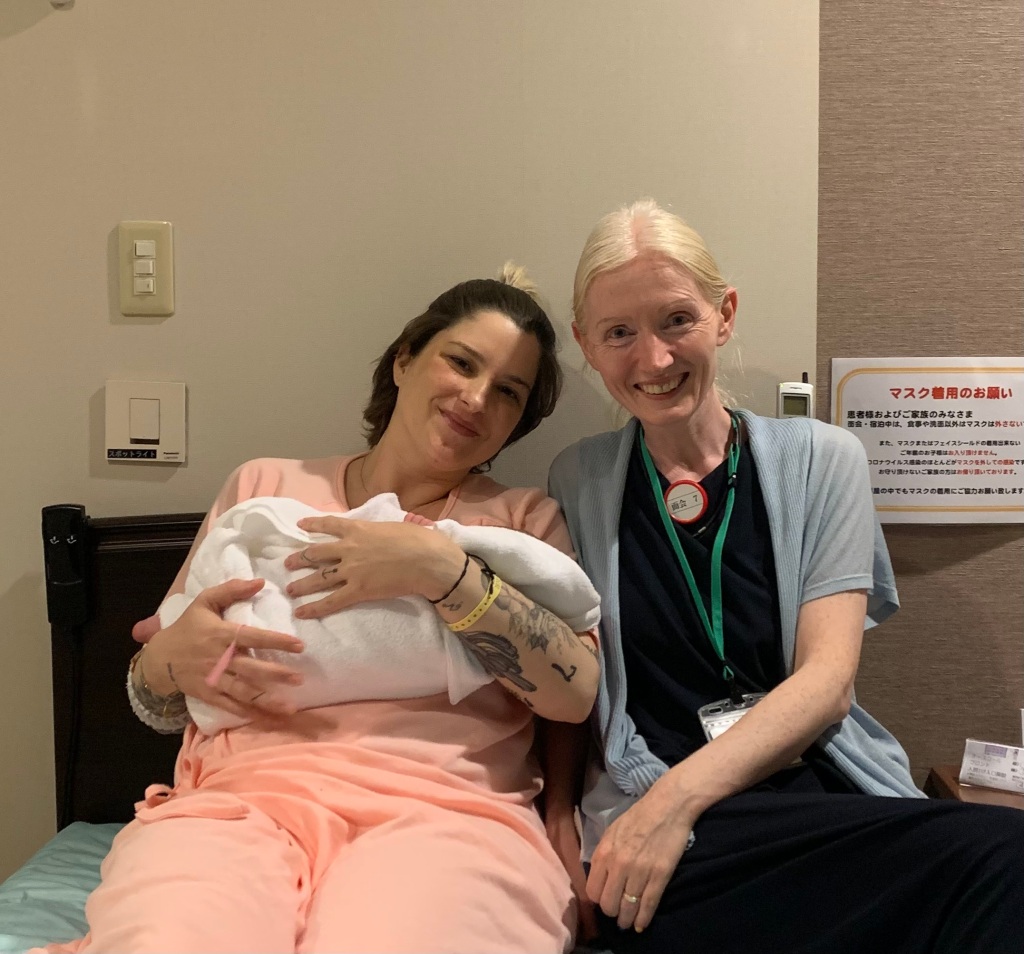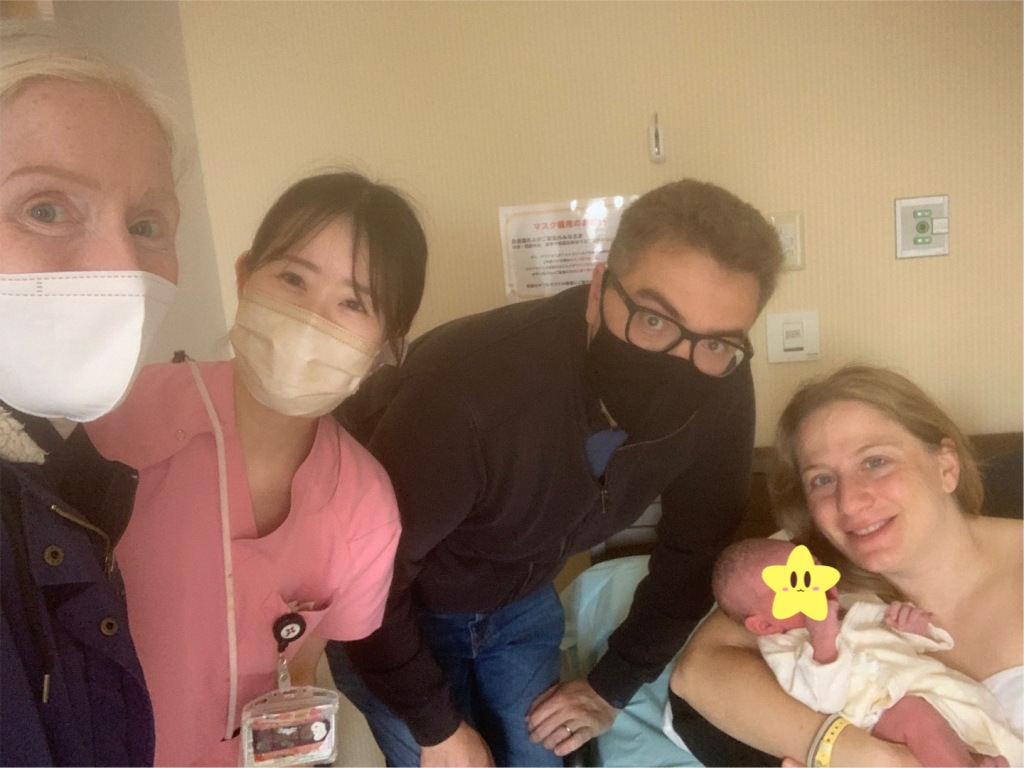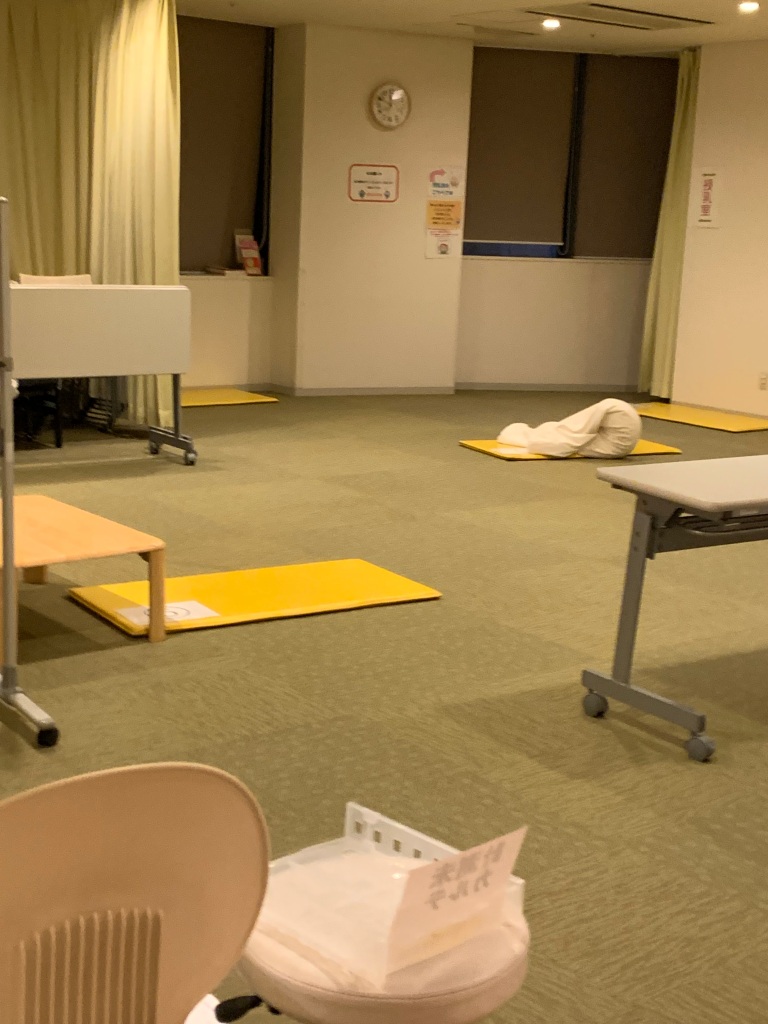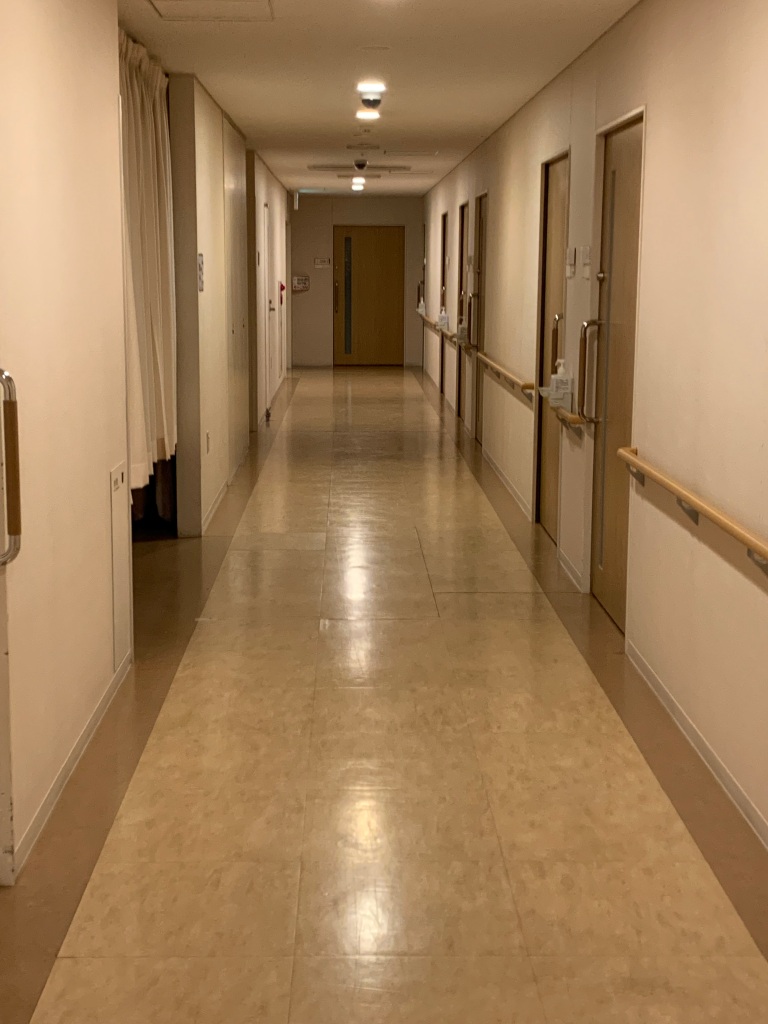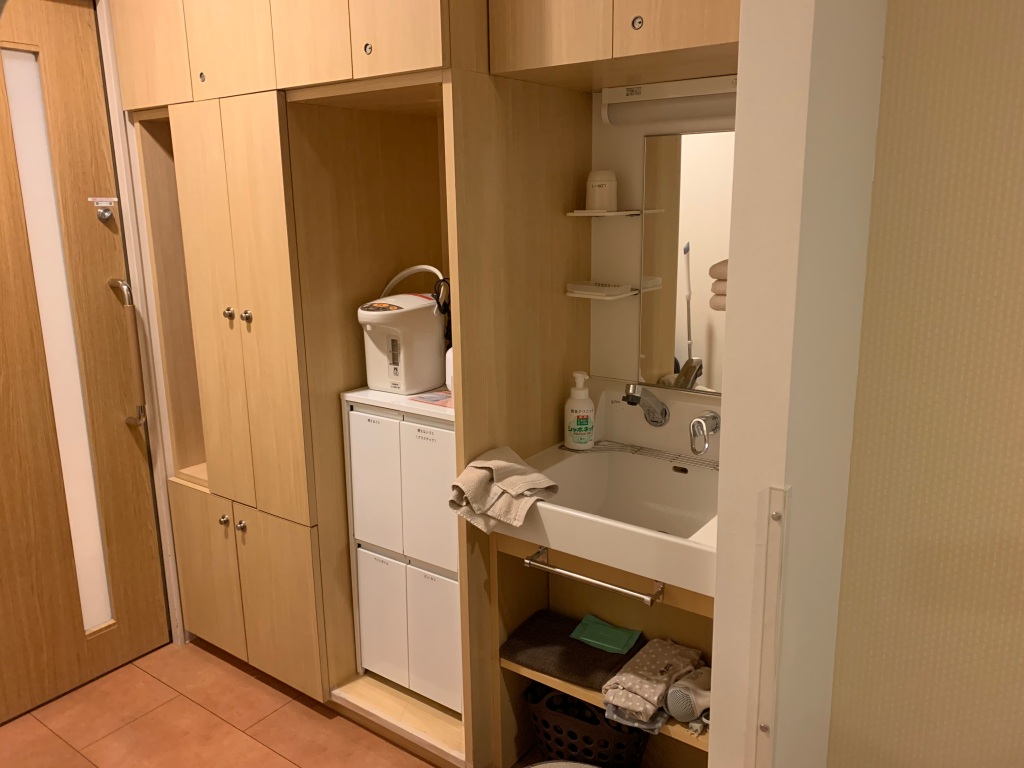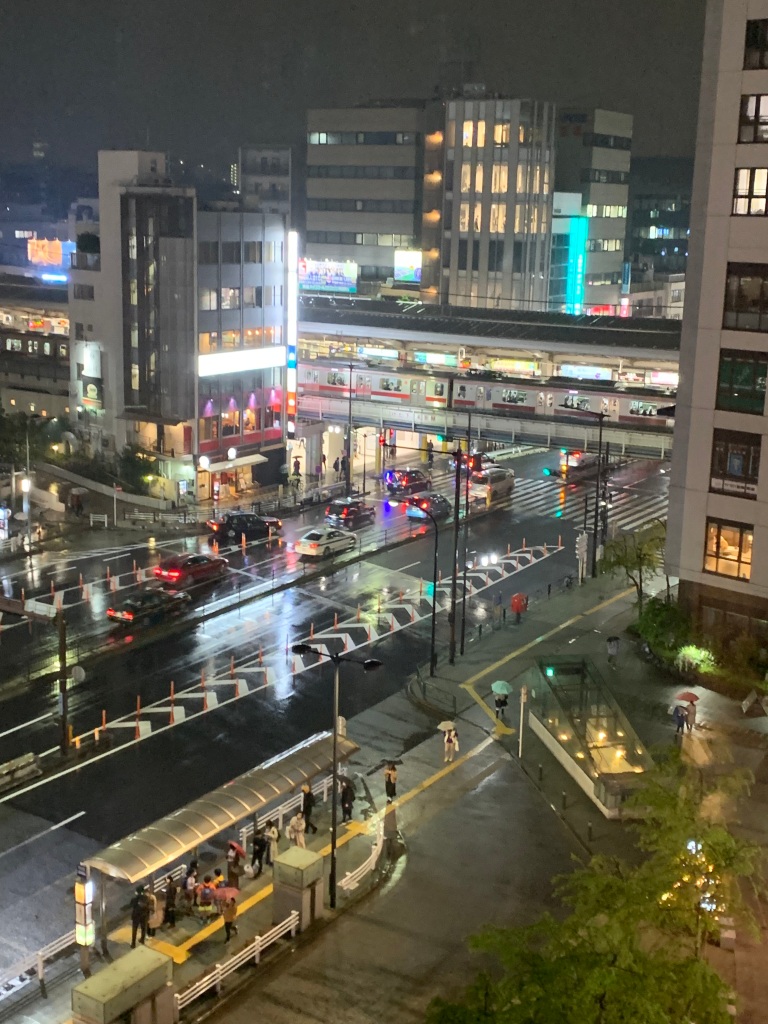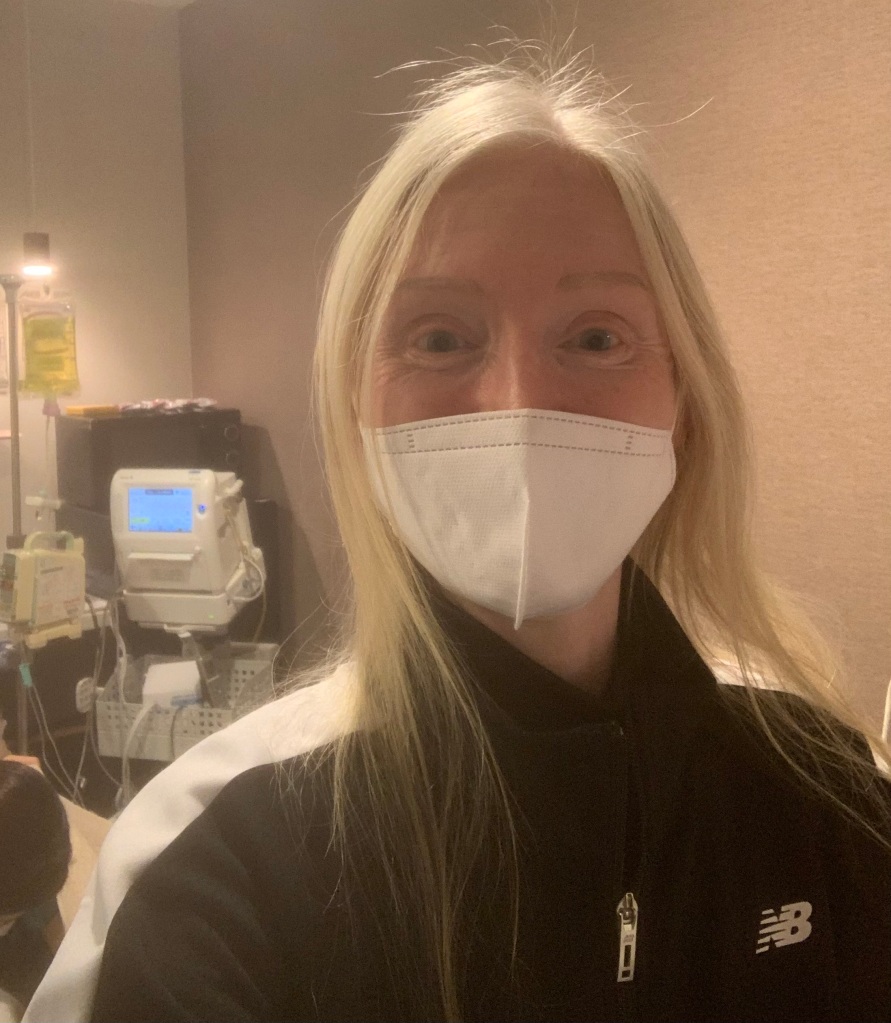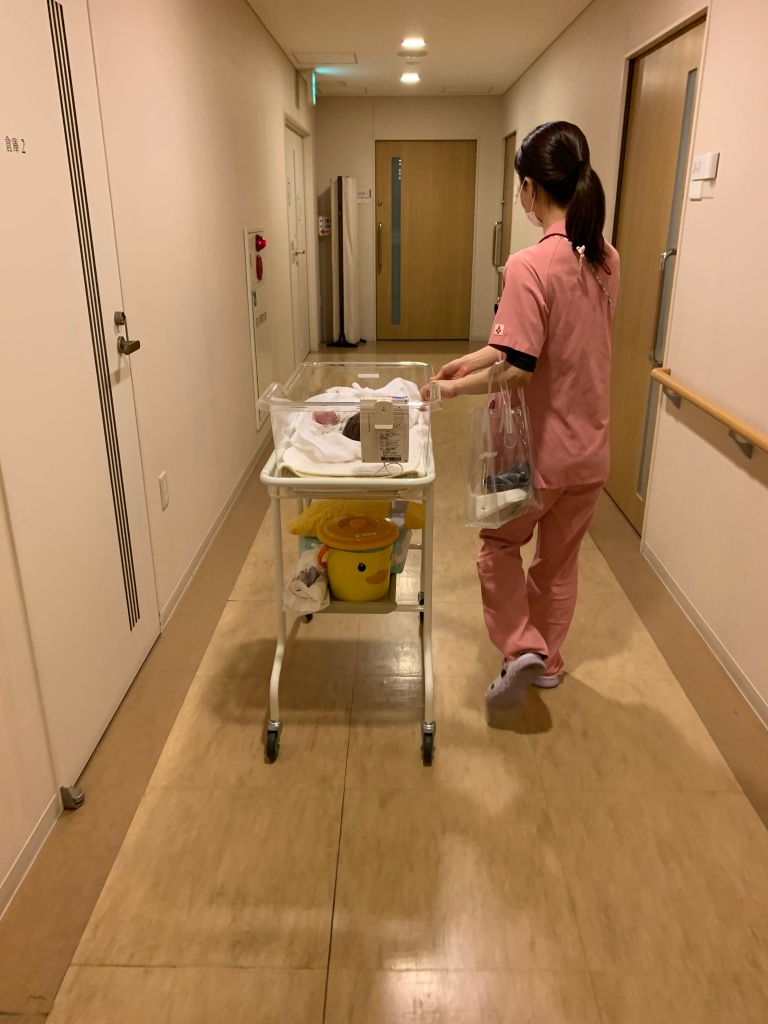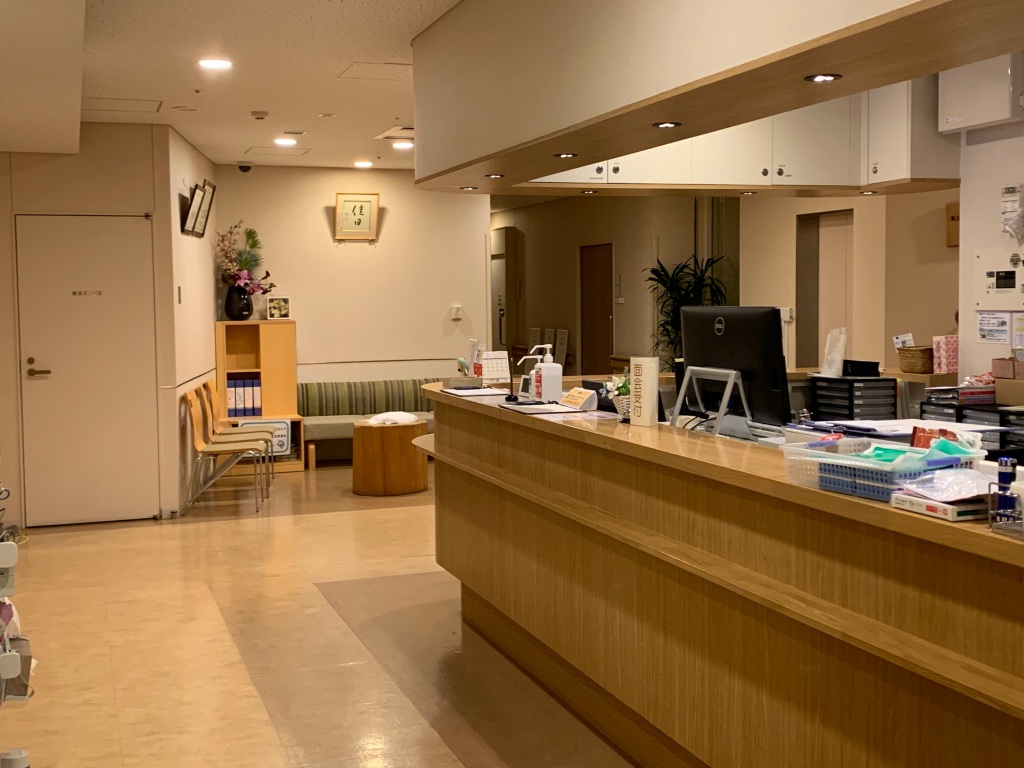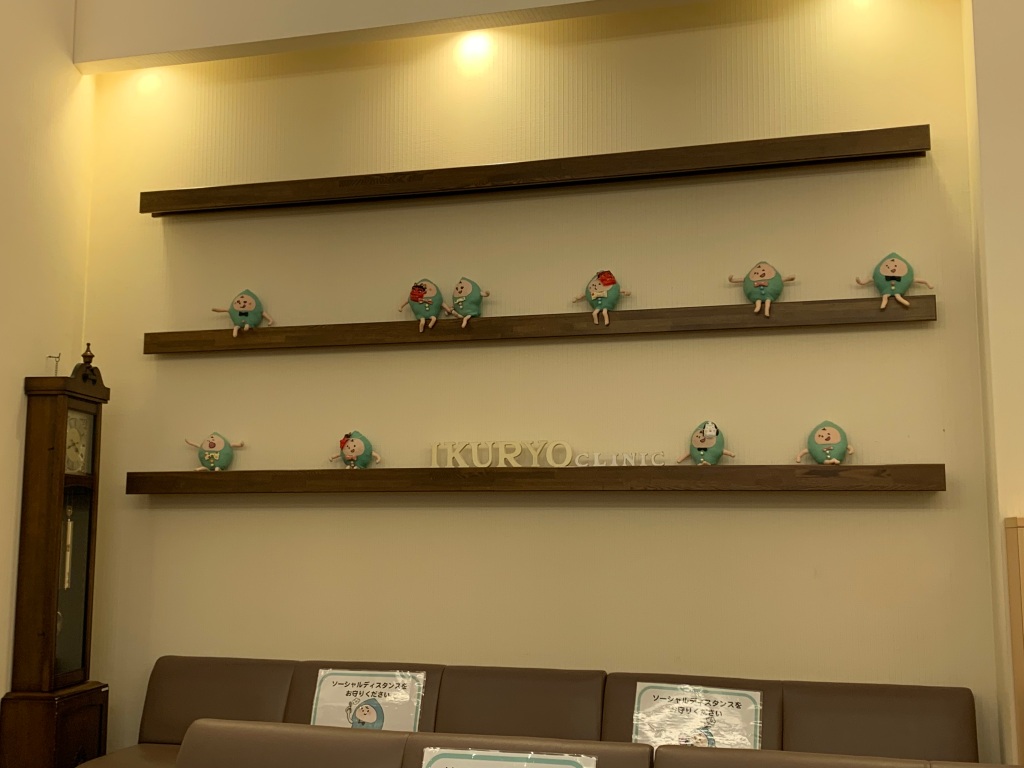Over the past 2.5 months, I’ve been at Ikuryo Clinic in Naka Meguro 4 times for labours. They were all smooth experiences but each unique in how they presented and progressed (as is the case with any labour). I’ll share a little about them here.
Back in March, one of my clients who had transferred to Ikuryo from Aiiku (due to Aiiku’s very severe restrictions back then) just a few weeks before, had her second baby there. Her labour began late afternoon gently, and baby was here 3-4 hours later not long after her contractions got strong. She was in the LDR room (one of the many room options the hospital has and a room type in which the husband can stay overnight during post-partum visiting time) which meant that she could labour, give birth, and stay for her post-partum stay in the same room without needing to be moved. She got immediate skin-to-skin and delayed cord clamping. A minor complication after birth was that the umbilical cord kind of broke off from the placenta which meant that the doctor had to go in and scoop out the placenta manually (by hand). And there was a fair bit of blood loss, too. Nothing too scary but enough that an iron infusion was recommended straight after.
The next birth took place in April. This was an induction just before my client was due because of small decelerations in the baby’s heart rate during a non-stress test. She had gone in for her regular check-up in the 39th week and the non-stress test showed some dips. My client called me as the doctor wanted to explain a few things, and it was decided that doing an induction was the best choice. I headed to the clinic and the induction was started (with pitocin) in the early afternoon. Over the next few hours, the pitocin was level was increased (as is the norm here) and my clients gradually started to feel the contractions.
By 6pm, her breathing was a lot more focused but she was still doing fine. Just before 8pm, the midwife did a check and she was 3.5cm dilated with cervix still firm. Her breathing was getting a lot stronger and I had commented that it seemed to have changed. At 9pm, she was 5cm and the midwife did a sweep of the cervix and she mentioned things were looking a lot more favourable now. And then after that, suddenly everything started to happen. The bottom pressure associated with wanting to push was suddenly there and at 9:30pm (less than half an hour later), my client was giving birth. Sometimes with a second baby (or a third etc) things can progress very quickly like that.
My client was in SP-1 room. This is the most expensive of all the room options. You can labour in here but technically it’s not for the actual delivery (you need to move to one of the separate delivery rooms for that). However, as the midwives prepared for the delivery, I asked if she could just stay in this room instead of being moved and they allowed it – I assume because of the speed at that point of how things were going. She gave birth on all 4s on the bed, which is supported in Ikuryo as a birthing position, and she was able to support and hold her baby as baby was being born and then have immediate skin to skin.
A quick note about the SP-1 room: The husband/partner can stay overnight here (along with some other room types). There is a bath tub as well as shower & toilet that patients can use, and the room comes with some other benefits – there is a treatment/massage service after birth (usually on day 3 or 4) and a few other things like a tea service, laundry service and so on.
I returned home from this labour around midnight, got a couple of hours’ sleep…and then woke up at around 2pm to a call from the husband of another client saying labour had started an hour earlier. I called Ikuryo for them and headed back out. I ended up arriving back there before they did. It was also this client’s second baby and when she was checked (just before 4am), she was 8cm. For sure, these are numbers everyone loves to hear in labour.
My client was in the LDR room for her labour (that’s what was available) and she alternated between standing and sitting during and between contractions. She was very calm in demeanour and just breathing slowly and deeply. Lying down on the bed was physically impossible for her.
At 4:20am, she was 9cm and she got on to the bed on all 4s. She started to feel a bit of bottom pressure. At just before 5am, she was 10cm and her water broke at this point. Baby was born at 5:11am! My client’s husband was able to cut the cord and they also chose to harvest the cord blood for storage which Ikuryo is able to support.
This was a wonderful labour for this client who had had a very different experience with her first birth which was near the start of the pandemic in 2022 and her hospital then (Aiiku) didn’t allow her husband in the labour. She knew she didn’t want the same experience again, so when Aiiku reimposed their no husband/partner rule again back in February of this year, she switched to Ikuryo which meant she could be fully supported in person by her husband and by me. I was really happy she could have the birth experience she missed out on the first time.
Finally, just under 2 weeks ago, I attended another birth at Ikuryo. This time it was with a couple expecting their first baby. They were originally at Tokyo Mothers Clinic in Setagaya where everything was going fine for the prenatal checks. However, the closer it got to birth, the more anxious my client started to get about not having any support (TMC still have birth support restrictions in place, unfortunately). Luckily, she was able to switch to Ikuryo in April and they still had space for a May due date.
On the day her labour started, she was experiencing some mild contractions from the early morning around 6 or 7am. By around midday, they had started to get a lot stronger and more frequent at around every 5 minutes. She used the bath to help manage things while she was still at home. By 3pm, they were every 3 minutes and she decided she wanted to go to the clinic. They arrived just after 4pm and she was 4cm dilated. She chose to use the epidural and I arrived at 6pm. Even with the epidural, she was still feeling things and needing to breathe through contractions – the intensity level was just lowered. This is the interesting thing with the epidural – everyone will experience it differently (some will have no feeling, others significant feeling still). As it was, it was actually a good thing she still had feeling – this helps a lot during pushing. And she was ok enough to be able to say no to extra top-ups.
For her labour, she was in the SP-2 room. This is the 2nd most expensive room in the clinic – there is a bed, a separate toilet and bath area, and a tatami area, and again it’s another room type the husband can stay in overnight during the post-partum stay. It was actually a really nice space from my point of view. By 7:30pm she was feeling pressure in her bottom and was already 9cm dilated, so she was moved to the active birth room for delivery. In the SP-2 room, technically you can’t give birth in the same room. Thanks to not having epidural top-ups, my client was able to walk there.
(FYI the active birth room had a water birth tub, a delivery bed, a rope for leverage hanging from the ceiling and so on).
In the active birth room, my client’s waters broke and 7:45pm and pushing started. Baby had tilted a little bit, so it took some time. There was also a period where the baby’s heart rate had started to drop a little bit, so they gave my client some extra oxygen and there was a little talk about possibly using the vacuum to bring baby out sooner. As it was, the extra oxygen helped and baby’s heart rate returned to optimal levels.
My client continued with pushing but it seemed that some pitocin would be necessary as there wasn’t much movement of baby coming down. This can be one of the potential drawbacks of the epidural – that it can slow things down and lead to a bit of a prolonged second (pushing) stage of labour. Within about 30minutes of the pitocin starting, pushing was a lot more effective and birth was imminent. The moment baby was born was wonderful – such lovely emotion from my client’s husband.
Her husband was able to cut the cord and immediately she had skin-to-skin contact with all the monitoring of baby and check-ups for baby done on my client’s chest. This was the case for all of the above births, too, and one of the big positives of Ikuryo. There is no period of time where baby is taken away for a few hours to be checked in any nursery.
Ikuryo request that anyone who wants to change to them from another hospital does so by 36 weeks at the latest (of course, the earlier the better in order to guarantee they have space and to have more options with room choices). They also request that you bring a Japanese speaker if you can’t speak Japanese yourself (that could be a spouse, me as a doula – they know me well, or a friend). Most of the doctors there can actually speak English (or enough English) but they are very insistent on clear communication, hence the request to bring a language support person along.
If anyone would like more info about Ikuryo or any other birth facilities here, please get in touch. Also, if anyone would like my doula support, please get in touch. My availability for package support is getting booked for the rest of this year already. I only have 4 open spots for September onwards (Autumn is always a busy period for babies, like Spring). January 2023 onwards is a lot more open!
You can see previous write-ups of Ikuryo here and here




